-
 Bitcoin
Bitcoin $83,622.6306
-1.03% -
 Ethereum
Ethereum $1,589.6945
-1.99% -
 Tether USDt
Tether USDt $1.0000
0.01% -
 XRP
XRP $2.0889
-1.88% -
 BNB
BNB $580.0353
-0.85% -
 Solana
Solana $126.7178
-2.33% -
 USDC
USDC $1.0000
-0.01% -
 TRON
TRON $0.2506
-0.43% -
 Dogecoin
Dogecoin $0.1537
-3.31% -
 Cardano
Cardano $0.6091
-4.20% -
 UNUS SED LEO
UNUS SED LEO $9.3201
-0.87% -
 Chainlink
Chainlink $12.2503
-3.06% -
 Avalanche
Avalanche $19.0105
-5.53% -
 Stellar
Stellar $0.2359
-1.88% -
 Toncoin
Toncoin $2.8505
-1.13% -
 Shiba Inu
Shiba Inu $0.0...01170
-2.63% -
 Sui
Sui $2.0950
-4.30% -
 Hedera
Hedera $0.1569
-4.99% -
 Bitcoin Cash
Bitcoin Cash $319.8208
-1.32% -
 Litecoin
Litecoin $75.7238
-2.04% -
 Polkadot
Polkadot $3.5266
-3.99% -
 Dai
Dai $1.0001
0.01% -
 Bitget Token
Bitget Token $4.2562
-1.04% -
 Hyperliquid
Hyperliquid $15.1159
-4.03% -
 Ethena USDe
Ethena USDe $0.9992
0.01% -
 Pi
Pi $0.6455
-12.89% -
 Monero
Monero $215.1633
0.19% -
 Uniswap
Uniswap $5.1866
-3.08% -
 OKB
OKB $51.9360
-0.45% -
 Pepe
Pepe $0.0...06972
-4.89%
What is the difference between GPU mining and CPU mining?
GPU mining is more efficient and profitable than CPU mining due to higher hash rates, but it involves higher initial costs and energy consumption.
Apr 08, 2025 at 01:28 pm

What is the difference between GPU mining and CPU mining?
Cryptocurrency mining is a crucial process that validates transactions and adds them to the blockchain. Two primary methods of mining are GPU mining and CPU mining. Understanding the differences between these two methods can help miners choose the most efficient and cost-effective approach for their needs.
h3: Basics of CPU Mining
CPU mining involves using a computer's central processing unit (CPU) to solve complex mathematical problems required to validate transactions and mine cryptocurrencies. In the early days of Bitcoin, CPU mining was the standard method because the network's difficulty level was low, and CPUs were sufficient for the task.
Advantages of CPU Mining:
- Accessibility: CPUs are widely available in most computers, making CPU mining accessible to anyone with a standard computer.
- Low Cost: CPUs are generally less expensive than GPUs, making it a more affordable option for beginners.
- Energy Efficiency: CPUs typically consume less power than GPUs, which can result in lower electricity costs.
Disadvantages of CPU Mining:
- Low Hash Rate: CPUs have a significantly lower hash rate compared to GPUs, meaning they can process fewer calculations per second.
- Inefficiency: As the difficulty of mining increases, CPUs become less efficient and less profitable.
- Limited Scalability: It is challenging to scale CPU mining operations due to the limited processing power of CPUs.
h3: Basics of GPU Mining
GPU mining utilizes a computer's graphics processing unit (GPU) to perform the calculations needed for mining. GPUs are designed to handle parallel processing tasks, making them much more efficient at mining than CPUs.
Advantages of GPU Mining:
- Higher Hash Rate: GPUs can process a higher number of calculations per second, resulting in a higher hash rate and increased mining efficiency.
- Scalability: It is easier to scale GPU mining operations by adding more GPUs to a rig.
- Versatility: GPUs can mine a wider variety of cryptocurrencies compared to CPUs.
Disadvantages of GPU Mining:
- Higher Cost: GPUs are more expensive than CPUs, and setting up a GPU mining rig can be costly.
- Higher Energy Consumption: GPUs consume more power than CPUs, leading to higher electricity costs.
- Heat and Noise: GPU mining rigs generate more heat and noise, which can be a concern for home miners.
h3: Performance Comparison
When comparing the performance of CPU mining and GPU mining, the difference is stark. A GPU can achieve hash rates that are hundreds or even thousands of times higher than a CPU. For example, a high-end CPU might achieve a hash rate of around 10-20 MH/s (megahashes per second), while a mid-range GPU can easily reach 1000 MH/s or more.
This significant difference in hash rate directly impacts the profitability of mining. GPU mining is generally more profitable due to its higher efficiency and ability to process more calculations per second. However, the initial investment and ongoing operational costs of GPU mining are higher, which can affect the overall return on investment.
h3: Cost and Profitability Analysis
The cost of setting up a mining operation varies significantly between CPU and GPU mining. A CPU mining setup can be as simple as using an existing computer, with minimal additional costs. In contrast, a GPU mining setup requires purchasing specialized hardware, such as GPUs, mining rigs, and cooling systems.
Initial Investment:
- CPU Mining: The initial investment is low, typically limited to the cost of a computer if you don't already have one.
- GPU Mining: The initial investment is higher, with costs ranging from a few hundred to several thousand dollars, depending on the number and quality of GPUs used.
Operational Costs:
- CPU Mining: Operational costs are lower due to the lower power consumption of CPUs.
- GPU Mining: Operational costs are higher due to the increased power consumption of GPUs and the need for cooling systems.
Profitability:
- CPU Mining: Profitability is generally low due to the lower hash rate and efficiency of CPUs.
- GPU Mining: Profitability can be higher due to the higher hash rate and efficiency of GPUs, but it depends on the cost of electricity and the price of the cryptocurrency being mined.
h3: Suitability for Different Cryptocurrencies
Different cryptocurrencies have different mining algorithms, and the suitability of CPU and GPU mining can vary based on these algorithms.
CPU-Friendly Cryptocurrencies:
- Monero (XMR): Monero is designed to be CPU-friendly and can be mined effectively using CPUs.
- Bytecoin (BCN): Bytecoin is another cryptocurrency that can be mined using CPUs.
GPU-Friendly Cryptocurrencies:
- Ethereum (ETH): Ethereum is primarily mined using GPUs due to its Ethash algorithm.
- Bitcoin (BTC): While Bitcoin can be mined using CPUs, it is more efficiently mined using GPUs or specialized ASICs (Application-Specific Integrated Circuits).
h3: Environmental Impact
The environmental impact of mining is an important consideration, especially as the scale of mining operations grows. CPU mining has a lower environmental impact due to its lower energy consumption. However, the overall impact is still minimal compared to GPU mining.
GPU mining, on the other hand, has a higher environmental impact due to its higher energy consumption. Large-scale GPU mining operations can consume significant amounts of electricity, contributing to carbon emissions and environmental degradation.
Frequently Asked Questions:
Q1: Can I switch from CPU mining to GPU mining easily?
A1: Switching from CPU mining to GPU mining involves purchasing and setting up GPU hardware, which can be a significant investment. You will need to consider the cost of GPUs, a mining rig, and possibly cooling systems. Additionally, you may need to install different mining software that is optimized for GPU mining. While the switch is possible, it requires careful planning and consideration of the costs and benefits.
Q2: Is it possible to mine cryptocurrencies using both CPU and GPU simultaneously?
A2: Yes, it is possible to mine cryptocurrencies using both CPU and GPU simultaneously, a process known as dual mining. However, this requires specific mining software that can manage both CPU and GPU resources effectively. Dual mining can increase your overall hash rate but may also increase the complexity of your mining setup and the power consumption.
Q3: How do I know if CPU or GPU mining is more profitable for me?
A3: To determine whether CPU or GPU mining is more profitable for you, you need to consider several factors, including the initial investment, operational costs, the hash rate of your hardware, and the current price of the cryptocurrency you are mining. You can use online mining calculators to estimate profitability based on these factors. Additionally, consider the long-term sustainability of your mining operation, including potential changes in cryptocurrency prices and mining difficulty.
Q4: Are there any cryptocurrencies that can only be mined using CPUs or GPUs?
A4: While most cryptocurrencies can be mined using either CPUs or GPUs, some are designed to be more efficient with one type of hardware. For example, Monero (XMR) is designed to be CPU-friendly, making it more accessible for CPU miners. On the other hand, Ethereum (ETH) is primarily mined using GPUs due to its Ethash algorithm. However, there are no cryptocurrencies that can only be mined using CPUs or GPUs exclusively, as most can be mined with either, albeit with varying levels of efficiency.
Disclaimer:info@kdj.com
The information provided is not trading advice. kdj.com does not assume any responsibility for any investments made based on the information provided in this article. Cryptocurrencies are highly volatile and it is highly recommended that you invest with caution after thorough research!
If you believe that the content used on this website infringes your copyright, please contact us immediately (info@kdj.com) and we will delete it promptly.
- Public Companies Added Nearly 100,000 Bitcoin To Their Balance Sheets During Q1 2025
- 2025-04-16 07:15:16
- Amidst the Stormy Seas of the Crypto World, a New Titan Emerges—BlockDAG
- 2025-04-16 07:15:16
- Bitcoin (BTC) reclaims $85,000, setting the stage for altcoins to rally
- 2025-04-16 07:15:14
- The Pi Network token price has increased by more than 14% over the past week.
- 2025-04-16 07:15:14
- A wave of capital is flowing out of Ethereum [ETH] and into Tron [TRX]
- 2025-04-16 07:05:14
- Figment to power 3iQ's newly approved Solana exchange-traded fund (ETF)
- 2025-04-16 07:05:14
Related knowledge
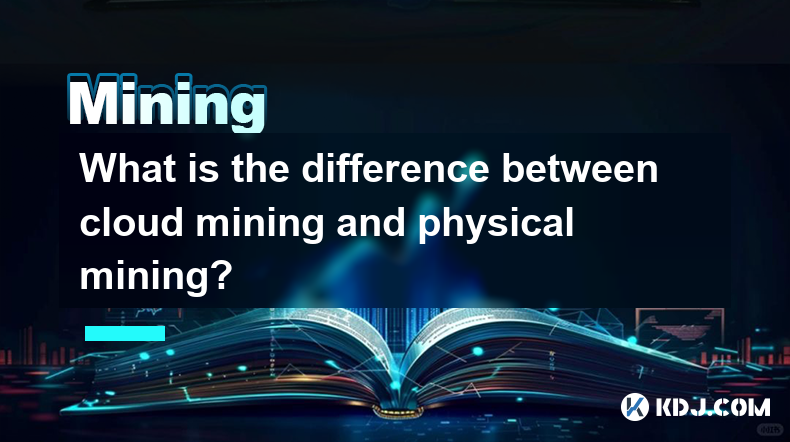
What is the difference between cloud mining and physical mining?
Apr 16,2025 at 01:49am
What is the difference between cloud mining and physical mining? In the world of cryptocurrencies, mining is the process by which new coins are generated and transactions are verified and added to the blockchain. There are two primary methods of mining: cloud mining and physical mining. Understanding the differences between these two approaches can help...
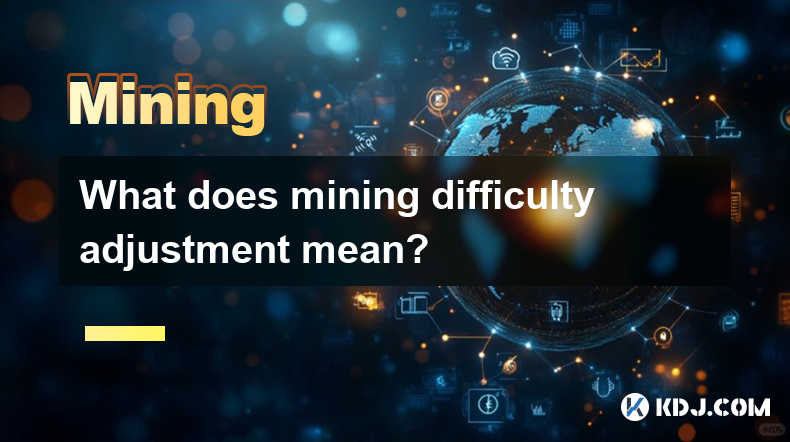
What does mining difficulty adjustment mean?
Apr 16,2025 at 12:42am
What does mining difficulty adjustment mean? Mining difficulty adjustment is a crucial mechanism in blockchain networks, particularly in Proof of Work (PoW) systems like Bitcoin. It ensures that the rate at which new blocks are added to the blockchain remains consistent, despite fluctuations in the total computational power (hash rate) of the network. T...
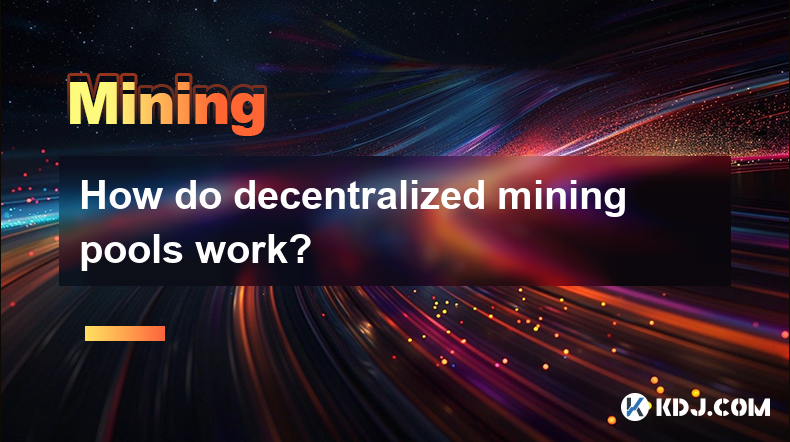
How do decentralized mining pools work?
Apr 16,2025 at 05:42am
Decentralized mining pools represent a significant evolution in the world of cryptocurrency mining, offering a more democratic and transparent approach compared to traditional centralized pools. In this article, we will explore the mechanics of decentralized mining pools, their benefits, and how they operate within the cryptocurrency ecosystem. What are...
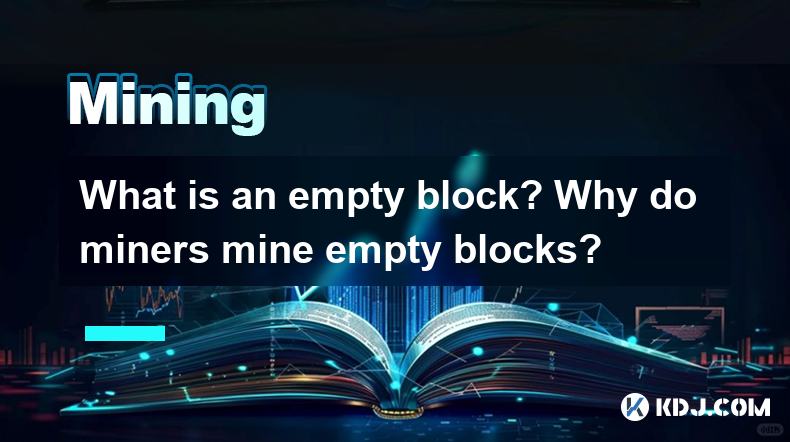
What is an empty block? Why do miners mine empty blocks?
Apr 16,2025 at 01:28am
What is an Empty Block?An empty block in the context of blockchain technology, particularly in cryptocurrencies like Bitcoin, refers to a block that contains no transactions other than the coinbase transaction. The coinbase transaction is a special transaction in which new bitcoins are generated and awarded to the miner who successfully mines the block....

What is the KawPow algorithm?
Apr 16,2025 at 06:43am
The KawPow algorithm is a proof-of-work (PoW) consensus mechanism specifically designed for the Ravencoin blockchain. It evolved from the earlier X16R and X16RV2 algorithms, aiming to enhance the security and efficiency of the mining process. KawPow was introduced to address the issues associated with ASIC (Application-Specific Integrated Circuit) miner...
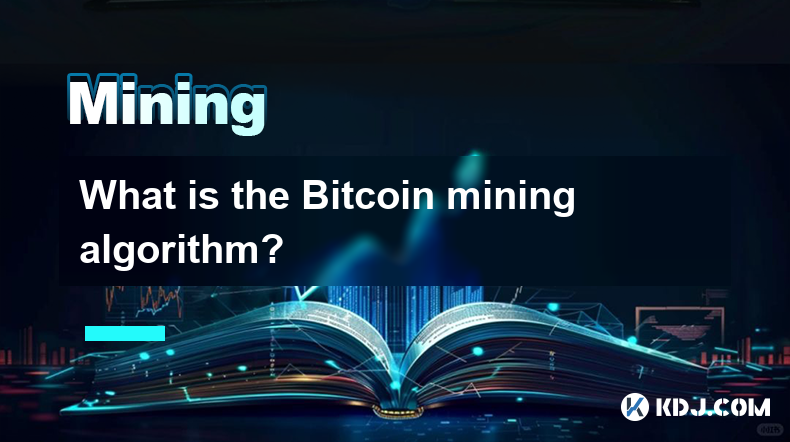
What is the Bitcoin mining algorithm?
Apr 15,2025 at 08:00pm
What is the Bitcoin Mining Algorithm? Bitcoin mining is a crucial process that maintains the integrity and security of the Bitcoin network. At the heart of this process lies the Bitcoin mining algorithm, which is responsible for verifying transactions and adding them to the blockchain. Understanding this algorithm is essential for anyone interested in t...

What is the difference between cloud mining and physical mining?
Apr 16,2025 at 01:49am
What is the difference between cloud mining and physical mining? In the world of cryptocurrencies, mining is the process by which new coins are generated and transactions are verified and added to the blockchain. There are two primary methods of mining: cloud mining and physical mining. Understanding the differences between these two approaches can help...

What does mining difficulty adjustment mean?
Apr 16,2025 at 12:42am
What does mining difficulty adjustment mean? Mining difficulty adjustment is a crucial mechanism in blockchain networks, particularly in Proof of Work (PoW) systems like Bitcoin. It ensures that the rate at which new blocks are added to the blockchain remains consistent, despite fluctuations in the total computational power (hash rate) of the network. T...

How do decentralized mining pools work?
Apr 16,2025 at 05:42am
Decentralized mining pools represent a significant evolution in the world of cryptocurrency mining, offering a more democratic and transparent approach compared to traditional centralized pools. In this article, we will explore the mechanics of decentralized mining pools, their benefits, and how they operate within the cryptocurrency ecosystem. What are...

What is an empty block? Why do miners mine empty blocks?
Apr 16,2025 at 01:28am
What is an Empty Block?An empty block in the context of blockchain technology, particularly in cryptocurrencies like Bitcoin, refers to a block that contains no transactions other than the coinbase transaction. The coinbase transaction is a special transaction in which new bitcoins are generated and awarded to the miner who successfully mines the block....

What is the KawPow algorithm?
Apr 16,2025 at 06:43am
The KawPow algorithm is a proof-of-work (PoW) consensus mechanism specifically designed for the Ravencoin blockchain. It evolved from the earlier X16R and X16RV2 algorithms, aiming to enhance the security and efficiency of the mining process. KawPow was introduced to address the issues associated with ASIC (Application-Specific Integrated Circuit) miner...

What is the Bitcoin mining algorithm?
Apr 15,2025 at 08:00pm
What is the Bitcoin Mining Algorithm? Bitcoin mining is a crucial process that maintains the integrity and security of the Bitcoin network. At the heart of this process lies the Bitcoin mining algorithm, which is responsible for verifying transactions and adding them to the blockchain. Understanding this algorithm is essential for anyone interested in t...
See all articles























































































